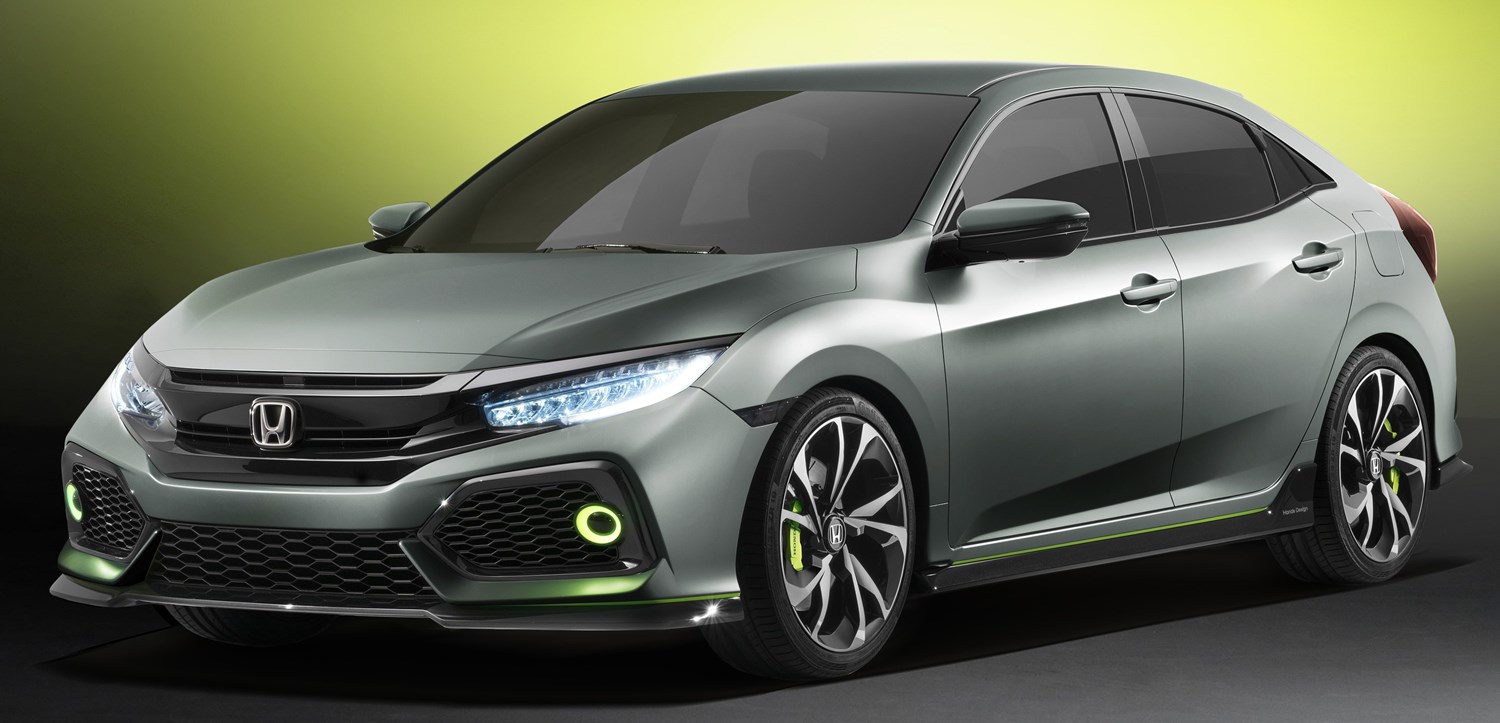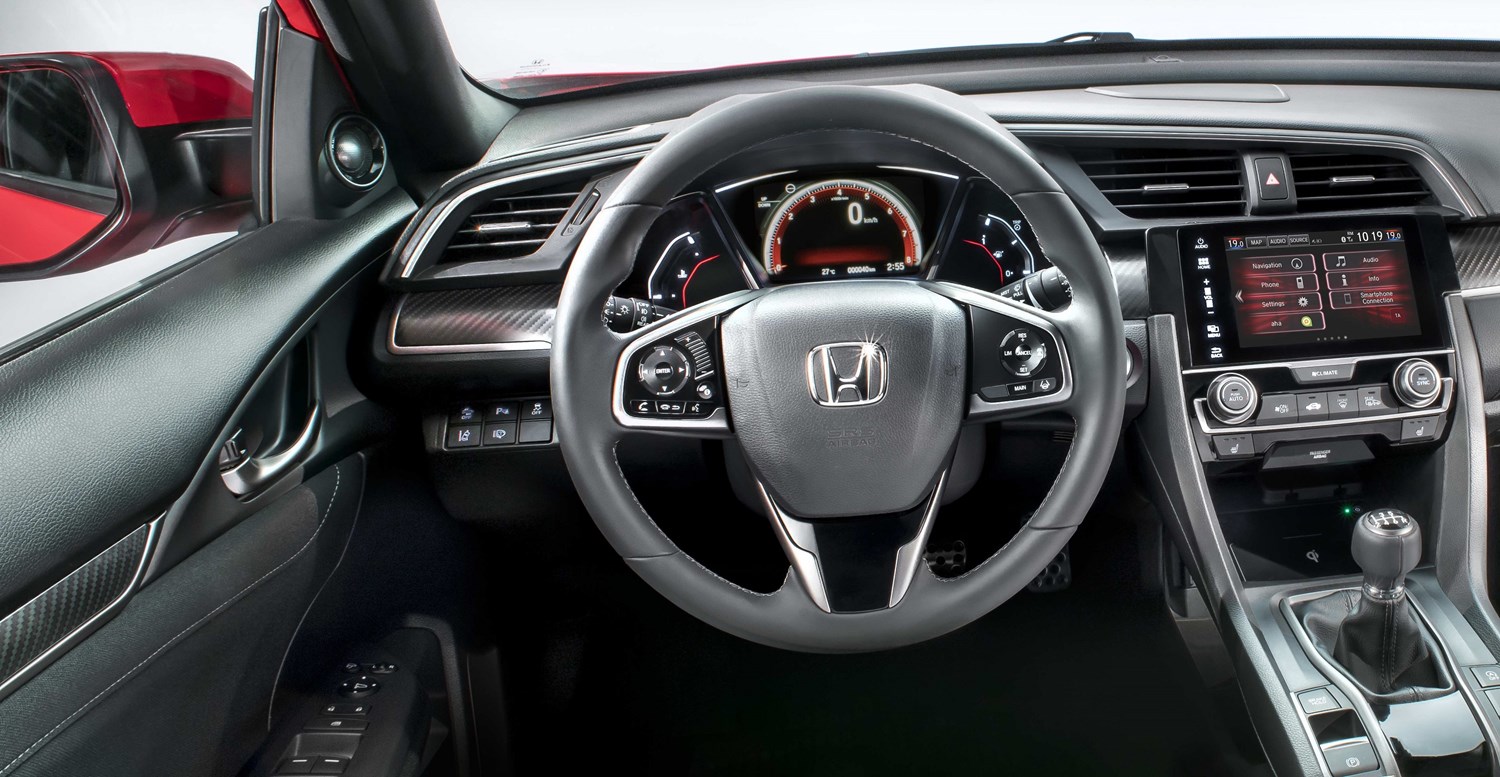Review
The Honda Civic started off as an extremely small and compact car when it was first released in 1972, but has since then grown to become a far larger and more substantial than the vehicle that started the line. That first car offered low-cost motoring, giving motor power to the masses. It was also easy to repair and cheap to run.
Moving from that point, the Civic continued to grow. Each generation brought with them more powerful engines, as well as better efficiency. Coupe variants were released, as were estates and four-wheel-drive versions. It soon became the case that there was a layout of Civic for nearly everyone’s needs.
Latest model
The latest model was launched in 2017, bringing with it a huge amount of standard equipment and technology. Many cars now come with features such as lane keep assist, lane departure warning, traffic sign recognition and a collision mitigation braking system. All of these systems work together to ensure that the new Civic is as safe as possible.
However, the biggest changes to the Civic were mechanical. An all-new suspension system has been fitted, allowing the car to remain composed at any speed, as well as being well-suited to the unsettled surfaces found on UK roads. Higher-specification cars also get adaptive dampers, giving you the option of changing the car’s ride to your preference.
The distance between the front and rear wheels has also been increased, giving better interior space. It’s a change that you may not notice from the outside, but one which makes a huge difference on the inside.
Engine choices remain limited for now, with either a 1.0-litre or 1.5-litre petrol on offer. There is a diesel on the cards, though that has yet to arrive. Enthusiasts will also be pleased to see the arrival of the Type R, which will be released in the UK in the later part of 2017.
Value for money
The Honda Civic offers very good value for money. Even base SE-trim cars get Bluetooth, steering wheel-mounted audio controls, as well as front and rear parking sensors. Higher-spec cars get a full infotainment system, a rear parking camera and automatic climate control.
However, as the latest model has only just been released, you won’t find any used examples on the market, so if you want to get your hands on one you’ll have to go straight to the dealer.
That said, the previous-generation Civic remains an excellent buy – especially used versions. Though criticised for its overly harsh ride, the ninth-generation Civic offered plenty of interior space in a usable hatchback layout.
You’ll look to pay around £15,000 for a 2016 Civic, fitted with a diesel engine and featuring around 10,000 miles on the clock. However, go for an older (but no less practical) 2012 model and this will halve the price – though expect to find more miles with it.
There is, of course, the Civic Type R. As mentioned, the new version isn’t due to arrive in the UK until late 2017, but the previous-generation hot-hatch remains one of the best in its segment.
A 2016 Type R will cost around £30,000, though earlier models – which are still a huge amount of fun to drive – sit at anywhere from £2,500 and up.
Looks and image
The Civic has always had a quirky design style, with even the very first generation coming with a boxy, utilitarian design that stood out. The new car has a far more saloon-like appearance than the car it replaces, though it still retains many angular lines.
The previous-generation car featured neat styling touches like rocket-shaped door handles and triangular exhaust surrounds.
The interior is designed in a similar way, with a gear lever mounted far higher than you’d traditionally expect in a hatchback. Type R cars also get large bucket seats that offer a huge amount of support.
Inside, the new Civic has really stepped up its game. Higher-spec cars get a large infotainment screen, while the gearstick has now moved back down to a more traditional position.
It’s similar to the previous car’s cabin, there’s no doubt about that, but the vast majority of materials are significantly upgraded. There are a few cheaper plastics used lower down in the cabin, but for the most part it’s a comfortable and well-made place to be.
Space and practicality
As a family hatchback, the Civic needs to be able to handle anything that a family can throw at it. New cars benefit from 478 litres of boot space, which is larger than the amount found in the most of its rivals.
Access to the boot is also quite low, which makes loading larger items into it quite easier – though a high load lip doesn’t make it as simple as it could be. However, Sport models do have their boot space reduced due to the specification’s dual central exhaust.
The previous-generation Civic provided 487 litres of boot space, which could be extended up to a total capacity of 1,210 litres with the rear seats folded flat. These cars also featured Honda’s ‘magic’ seats, which allowed the seat bases to fold upwards, which made carrying taller items a lot easier. Unfortunately, this is something that was left out of the current-generation Civic’s list of standard features.
Engines
From launch, there are just two engines available – a 1.0-litre three-cylinder petrol and a 1.5-litre turbocharged petrol. Though you could be fooled into thinking that the three-cylinder is too small for a car of this size, you’d be wrong. It produces 127bhp, and is able to reach 60mph in 10 seconds – which isn’t half bad for such a small-capacity engine. It’s a very sweet engine, with power accessible whenever it’s required.
The 1.0-litre does return the best economy figures, with 58.9mpg achieved on a combined cycle in cars fitted with a manual gearbox. The 1.5-litre meanwhile should return 48.7mpg – so if you’re looking for the very best fuel consumption, the smaller engine is certainly the smarter choice.
Running costs
Running costs for the new Civic really shouldn’t cause too many headaches. As previously mentioned, fuel economy is good with both engines, while Honda’s reputation for making reliable cars is unrivalled – and we’d expect it to be continued with the new car.
The CO2 levels for the 1.0-litre engine range from 106 to 117g/km, which will mean that when new tax rules come into play in April 2017, and Civic registered after this point will cost £140 a year to tax.
Previous-generation cars are equally hassle-free – though expect to pay more for fuel and tyres on Type-R versions. The large alloy wheels are particularly prone to kerbing, so make sure you factor this in when looking at a used example.
Things to look out for
Though famed for reliability, there have been a few mechanical recalls for the Civic. The most notable of these is a power steering issue, which was brought to light in 2006. It could cause all power steering to be lost, while another recall issued in the same year found that the Civic’s engine could cut out and fail to restart.
It was thought to be caused by water residue reaching the fuel pump wiring connector, therefore shutting the car down. Ensure that these problems have been addressed in any used car you look at. As for the new Civic, we will have to wait and see if any problems arise.
Rivals
There are several options in this segment. You have the ever-popular Volkswagen Golf, which offers excellent build quality and a wide variety of engines, as well as that all-important badge appeal. You’ll find residual values to be strong, too.
There’s also the Ford Focus. Now more grown-up than ever, it’s understandable why it’s so popular – but it’s certainly starting to show its age now.
Finally, the Vauxhall Astra makes for a compelling choice. However, it lacks the driver involvement offered by the Focus or Golf, and certainly doesn’t keep up with the Civic’s excellent dynamics.
Depreciation warning
Though made in vast numbers, the Civic doesn’t suffer too badly from depreciation. This could be down to the car’s excellent reliability, or its consistent demand. Honda drivers tend to hold on to their cars for a long time, which is why low-mileage examples do rather well on the used car market.
Early, classic Civics are starting to become something of a sought-after buy, which means you’ll pay quite the premium to get your hands on one of these.
Modern cars in sport trim levels do the best in terms of depreciation, with Type R models doing even better than these. If you’re looking to avoid losing too much on a car, these specification cars are the best ones to go for.





